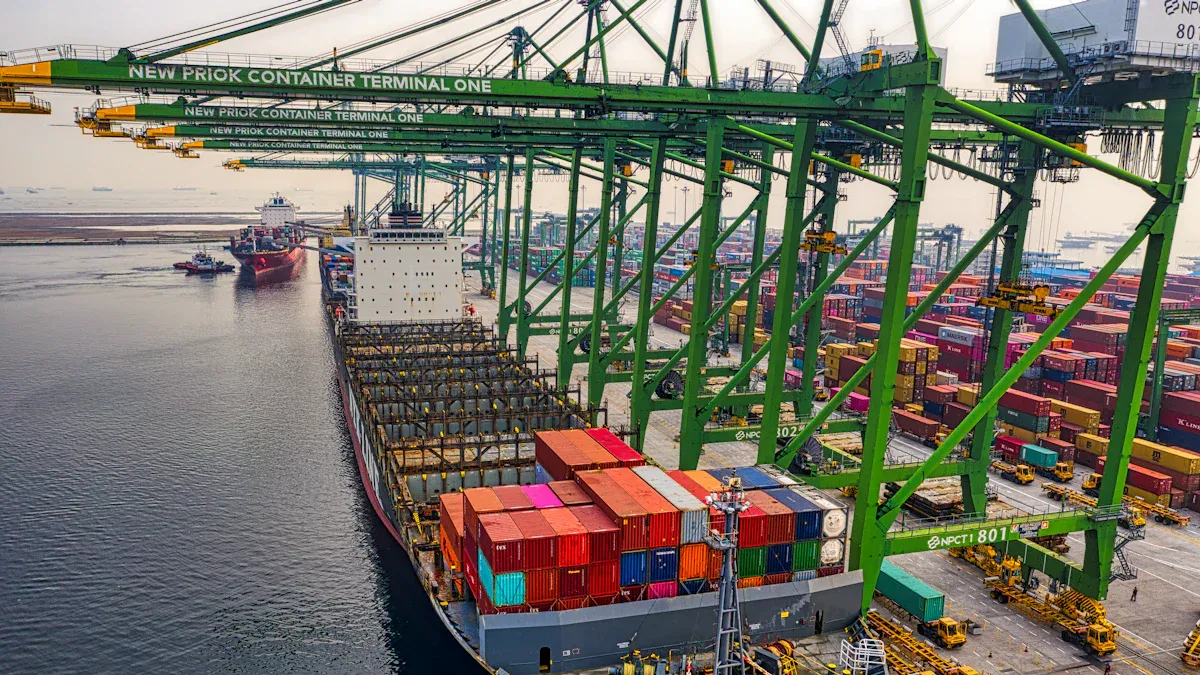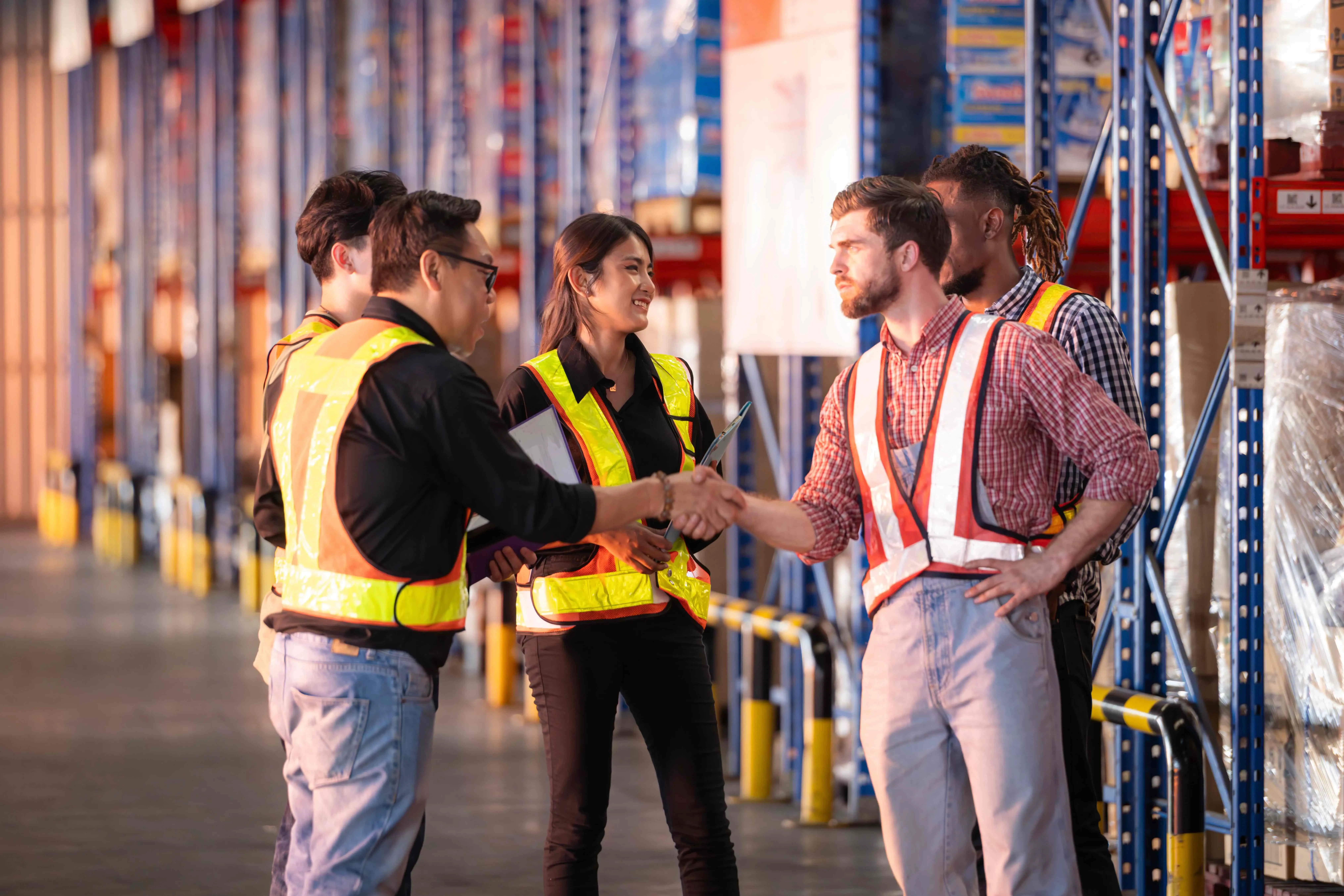How to Navigate Cross-Border Freight Challenges

Cross-border logistics can feel like a maze. You’ve got customs rules, efficiency demands, and risks all colliding. Did you know nearly 35,000 trucks cross the U.S.-Mexico border daily, fueling $3 billion in trade? But stricter customs rules by 2025 might slow things down. Investing in tech and partnerships can help you navigate this shipping puzzle with ease.
Key Takeaways
Learn customs rules to prevent delays and extra charges. Correct forms are key for easy shipping.
Use tools like trackers and automation to work faster and make fewer mistakes in cross-border shipping.
Work with experts like customs agents and 3PLs to make shipping easier and better.
Navigating Cross-Border Freight Rules
Shipping goods across borders has many rules to follow. Knowing these rules can help you avoid delays, fines, or losing shipments. Let’s explore how to stay prepared.
Following Customs Rules
Customs rules can be tricky since each country has its own. You must follow all rules, like having the right documents and meeting liability standards. For example, forms like bills of lading and certificates of origin must be correct. Even small mistakes, like a wrong form, can cause delays or extra costs.
Here are common customs challenges:
Compliance Area | What to Do |
|---|---|
Customs Documents | Make sure forms like bills of lading are correct. |
Local Liability Rules | Learn how each region handles responsibility for goods. |
Taxes and Tariffs | Know the duties and taxes for your shipments. |
Environmental Rules | Follow eco-friendly rules, like emission limits. |
Following rules isn’t just about avoiding trouble. It helps your shipments move faster. By fixing paperwork issues, you can keep things running smoothly.
Why Accurate Paperwork Matters
Paperwork is very important for cross-border shipping. Documents like invoices and packing lists help clear customs. Missing or wrong papers can delay shipments or lead to fines.
Using trade software can make this easier. These tools help you organize documents and avoid mistakes. They also ensure your papers match each country’s rules. Digital tools save time and money by improving accuracy.
Quick tip: Always check your documents before sending them. Small errors can cause big problems. Use technology to make your process easier and more accurate.
Keeping Up with Trade Rules and Tariffs
Trade rules and tariffs change often, so staying updated is key. For example, the U.S., Canada, and Mexico have different customs rules. If you don’t know the latest updates, you might face delays or higher costs.
Some countries now tax small shipments more than before. For instance, 90% of small shipments are taxed now, compared to 2% before. This shows why it’s important to learn new rules and adjust your shipping plans.
To stay informed, read industry news, follow updates, and work with a customs broker. Brokers can guide you through customs and help you follow the latest rules.
Using Technology to Make Cross-Border Shipping Easier
Technology has changed how we handle cross-border freight. It helps track shipments, speeds up tasks, and reduces stress. Let’s see how tech can improve your shipping process.
Tracking Shipments in Real Time
Imagine always knowing where your shipment is. Real-time tracking makes this happen. GPS and IoT sensors give live updates on your freight. You can see your shipment as it moves through customs and transit.
Here’s why tracking helps:
Saves lives by spotting problems quickly and responding fast.
Cuts delays with traffic updates and smoother border crossings.
Lowers fuel costs and improves delivery routes.
📊 Tracking System Benefits:
Metric | What It Shows |
|---|---|
Perfect order index | How often shipments arrive on time without damage. |
Percentage of shipments arriving as scheduled. | |
Inventory turnover ratio | How often stock is sold in a set time. |
Order accuracy | Rate of orders delivered without mistakes. |
Tracking systems give you better control over your shipments. It’s like seeing your entire logistics plan from above.
Automation Tools to Avoid Mistakes
Manual work can lead to errors, especially with cross-border freight paperwork. Automation tools fix this. They make tasks faster, reduce mistakes, and improve shipping.
Why automation is helpful:
Cuts errors from typing mistakes, ensuring correct paperwork.
Faster workflows mean quicker customs checks.
Better compliance avoids fines and shipment problems.
💡 Tip: Use automation for tasks like filling out forms or creating invoices. It saves time and ensures your shipments follow the rules.
Using Data to Improve Shipping
Data helps you make smarter choices and save money. Analytics tools show ways to improve cross-border logistics.
How data helps:
Predicting Demand: Know what customers need and manage inventory better.
Finding Best Routes: Choose faster and cheaper delivery paths.
Working with Suppliers: Use data to check supplier performance and build trust.
Data analytics finds problems and turns them into solutions. It’s like having a guide to make your shipping better.
Note: Combining tracking, automation, and data tools makes shipping smoother. These tools work together to cut delays, fix errors, and improve your freight process.
Improving Efficiency in Cross-Border Freight
Packaging and Labeling for Compliance
Packaging and labeling are more important than they seem. Wrong labels or bad packaging can cause delays or fines. Sometimes, shipments may even get rejected. That’s a big problem, right?
To prevent this, follow these rules:
Rule | What It Covers |
|---|---|
Accurate product details, weights, and measures. | |
Federal Food, Drug, and Cosmetic Act | Labeling rules for food and drinks. |
OSHA | Proper labels for dangerous materials. |
U.S. Customs regulations | Labels showing where products are made. |
Good packaging keeps items safe during shipping. Use strong materials to avoid damage. Clear labels help goods pass customs faster and without trouble.
Managing Risks in Cross-Border Shipping
Shipping across borders has risks like fuel price changes and delays. Managing these risks is key to smooth shipping. A study showed financial planning helps with fuel costs. Smart strategies also reduce freight price changes. These methods protect your money.
Using different transport types can lower risks too. For example, mixing rail and sea shipping saves money and is more reliable. Working with skilled logistics companies like JUSDA helps you handle surprises better.
Better Communication in Cross-Border Logistics
Clear communication is vital for cross-border shipping. When everyone, like suppliers and brokers, works together, things go well. Metrics like problem-solving time and customer happiness show this. Companies with good communication have happier customers.
Tools like JUSDA’s JusLink platform keep teams connected. Real-time updates and clear messages reduce delays. When everyone works together, cross-border shipping becomes easier.
Building Partnerships for Easier Cross-Border Freight Management
Strong partnerships help solve cross-border freight challenges. Working with customs brokers or third-party logistics (3PL) providers makes shipping easier and faster.
How Customs Brokers Simplify Cross-Border Shipping
Customs brokers are experts in handling shipping rules. They help with paperwork, follow local laws, and avoid fines or delays.
Think of them as guides for customs rules. They ensure your goods meet tariffs and manage duties. Their help saves time and reduces stress, so you can focus on your business.
Benefits of Using 3PLs for Cross-Border Freight
Third-party logistics providers (3PLs) bring expertise to your shipping process. They handle storage, transport, and more to improve efficiency.
Here’s how 3PLs help:
Save money by cutting shipping costs.
Adjust operations based on demand.
Offer expert advice for tricky shipping needs.
Manage risks like delays or unexpected problems.
Make customers happier with better service.
Performance Metric | What It Means |
|---|---|
Cuts costs by improving logistics. | |
Scalability | Easily changes operations to match demand. |
Access to Expertise | Provides knowledge to handle complex shipping. |
Risk Management | Reduces risks with experienced planning. |
Enhanced Customer Satisfaction | Improves service and meets customer needs. |
Partnering with a 3PL simplifies your freight process and boosts efficiency.
JUSDA’s Role in Cross-Border Freight Partnerships
JUSDA offers advanced solutions for cross-border shipping. With over 155 locations worldwide, they ensure smooth operations. Their JusLink platform uses IoT and big data for real-time updates and better teamwork.
JUSDA also provides custom solutions for industries like electronics and medical supplies. They help with customs and shipping, reducing delays and costs. Partnering with JUSDA makes your supply chain faster and more reliable.
Optimizing Cross-Border Freight with China-Europe Express Rail

Why Rail Transport Works Well for Cross-Border Shipping
Using trains for shipping has many benefits, especially for long trips. It’s cheaper, better for the environment, and great for moving large loads. Trucks are faster for short trips, but trains save money on trips over 300 kilometers.
Feature | Rail Shipping | Truck Shipping |
|---|---|---|
Speed | Slower for door-to-door | Faster for short trips |
Reliability | Sometimes less dependable | Usually more dependable |
Flexibility | Less flexible, fewer custom options | Very flexible, door-to-door service |
Cost Efficiency | Cheaper for short distances | |
Service Type | Competes with passenger trains | Standard and established services |
Trains also cut down on pollution, making them a cleaner choice for global trade. For companies wanting smart shipping, trains are a solid option to improve logistics.
How JUSDA’s China-Europe Express Rail Makes Shipping Better
JUSDA’s China-Europe Express Rail makes shipping faster and cheaper. It delivers goods in 15-20 days, quicker than ships and less costly than planes. Since starting in 2011, it has grown steadily, even during COVID-19.
This rail service helps industries like electronics, clothing, and medical supplies. It handles customs smoothly and avoids delays. With JUSDA’s help, you get clear tracking and reliable deliveries, making cross-border shipping easier.
Combining Sea and Rail for Better Shipping
Mixing sea and rail shipping combines their strengths for smarter logistics. This method lowers costs and pollution, offering both savings and eco-friendly benefits.
Combining sea and rail saves money by sharing resources.
It connects goods from places like Japan, South Korea, and Taiwan, boosting trade.
Smart planning improves efficiency and solves import/export problems.
By using sea-rail systems, JUSDA gives businesses greener and smarter ways to handle cross-border shipping challenges.

JUSDA Solutions
To provide you with professional solutions and quotations.
Handling cross-border shipping needs careful planning and teamwork. Following customs rules and using tools like tracking systems or automation can save time and money. Working with experts like JUSDA makes shipping easier and more efficient. Their China-Europe Express Rail offers faster and cheaper shipping options.
To do well, focus on these ideas:
Use technology to avoid mistakes and track shipments better.
Partner with logistics experts to make shipping smoother.
Try services like JUSDA’s to improve your supply chain.
Studies show that using technology and teamwork helps clear customs faster and work more efficiently. By following these tips, you can solve cross-border shipping problems easily.
See Also
Exploring Supplier Connections in Global E-commerce Strategies
Achieving Success in International Trade Through JUSDA
Addressing Global Supply Chain Growth Issues Effectively
Expert Advice for Overcoming Automotive Supply Chain Hurdles
